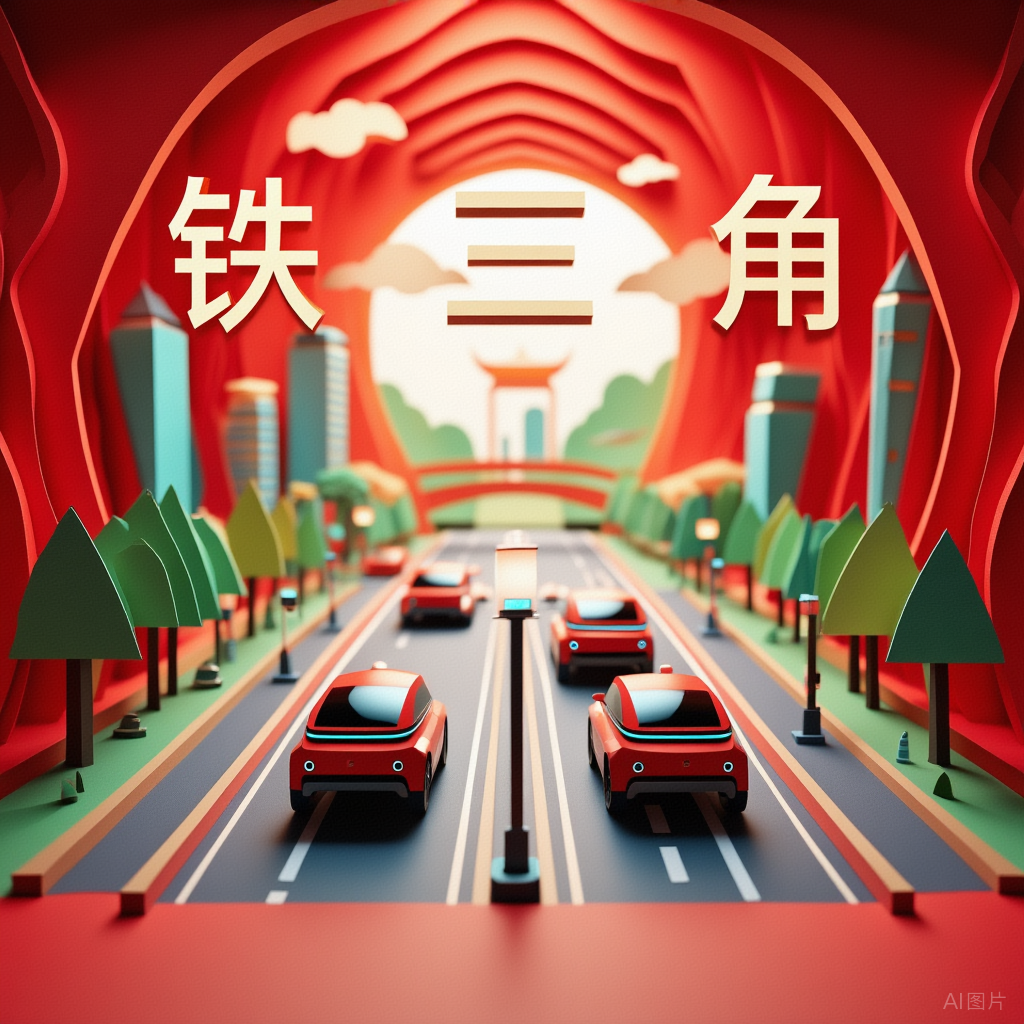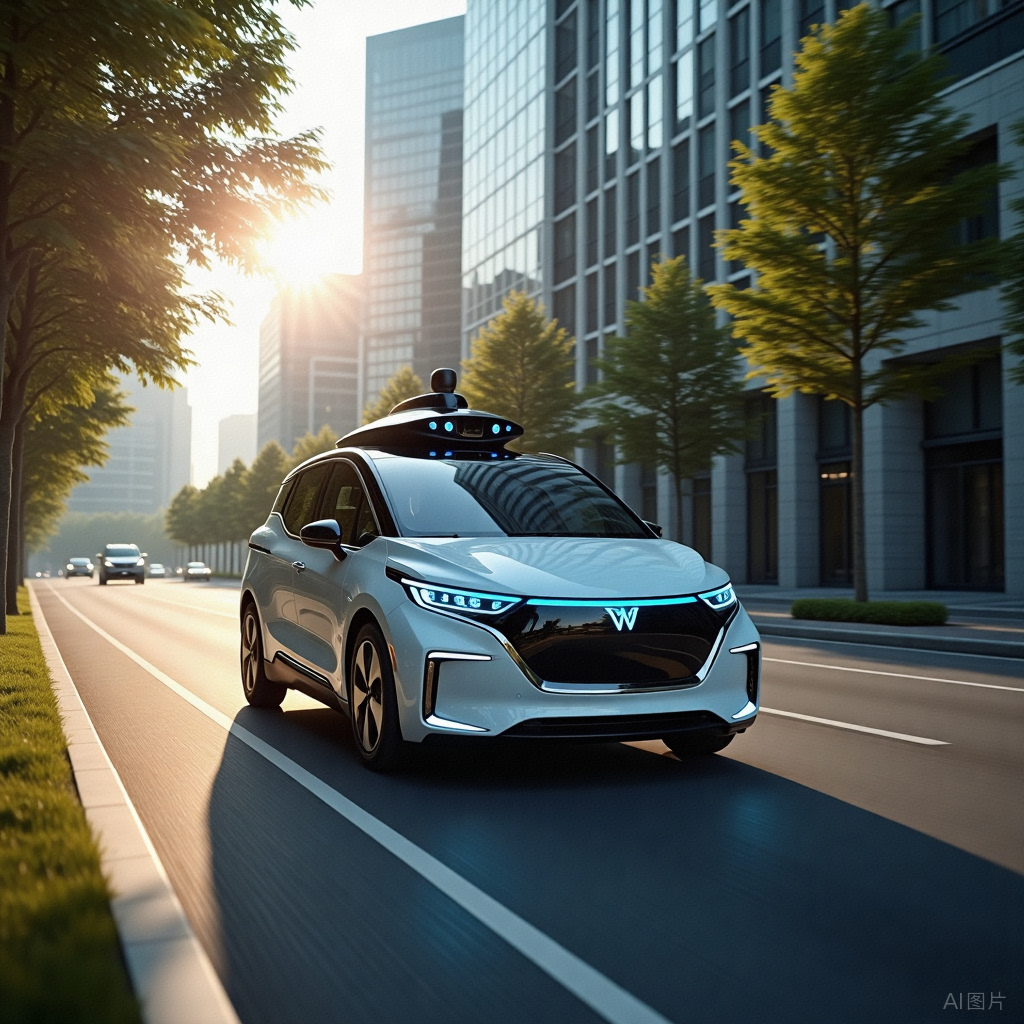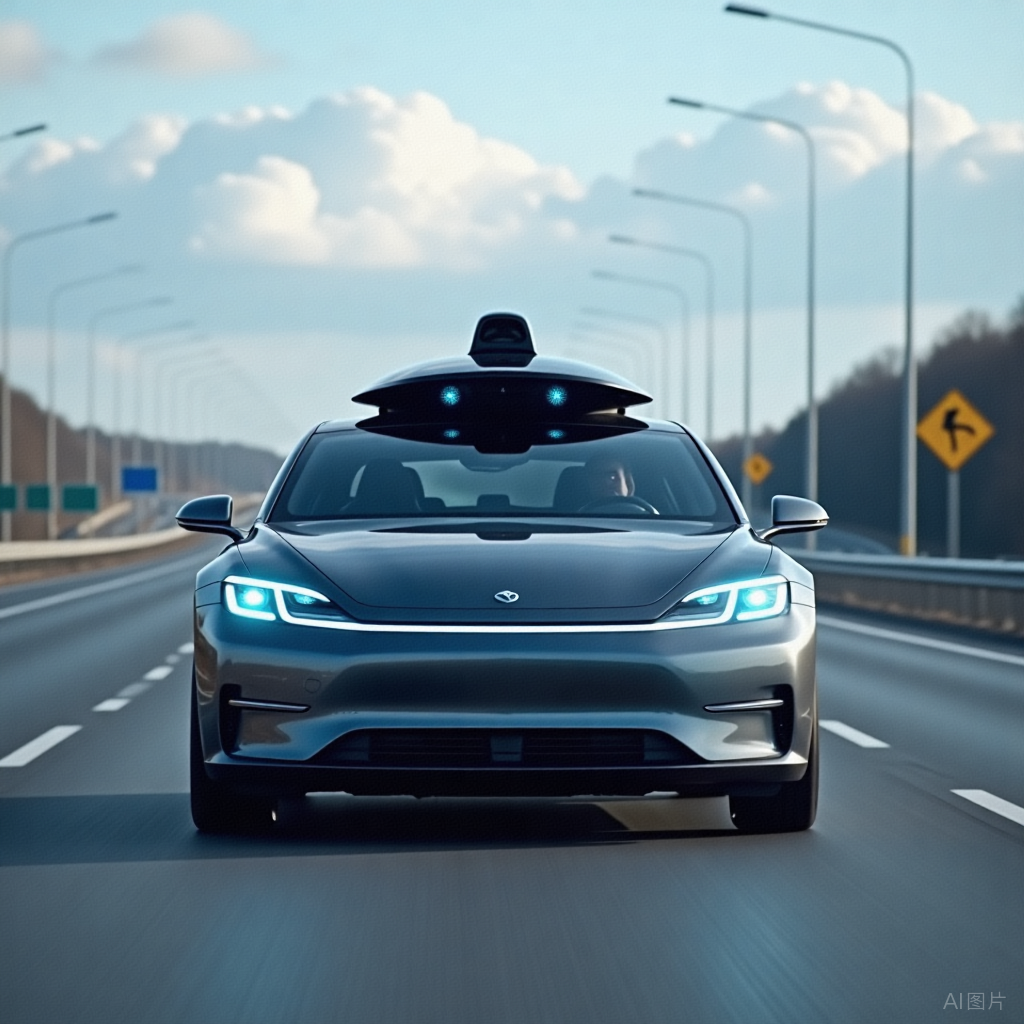The Future of Autonomous Driving: Carmakers Cannot Go It Alone - China's "Iron Triangle" Accelerates the New Race
![]() 05/22 2025
05/22 2025
![]() 475
475
Introduction
While Tesla's Full Self-Driving (FSD) continues to face scrutiny on Silicon Valley streets, driverless vehicles in Beijing's Yizhuang district smoothly navigate morning and evening commutes, and autonomous delivery vehicles in Pingshan, Shenzhen, deliver milk tea and fresh produce punctually to office buildings along predetermined routes.
In this global race for autonomous driving, Chinese carmakers have suddenly come to realize that independent research and development is not as effective as forming an "Iron Triangle" – where carmakers manufacture vehicles, tech companies provide algorithms, and the government builds roads. These three forces collaborate to expedite progress.
Today, Unmanned Vehicles Coming (public account: Unmanned Vehicles Coming) delves into why "carmakers alone cannot achieve optimal autonomous driving" and the solutions China is exploring.
(For reference, please click:
"China's First Driverless Car: From the Laboratory to the Yangtze River's 30 Years of Rapid Development")

I. Carmakers' Dilemma: From "Closed-Door Car Making" to "Hitting a Wall"
First, let's address a heart-wrenching reality: A carmaker invested 5 billion yuan in autonomous driving R&D, but after three years, the test vehicles hadn't left the park.
Why?
They encountered a "data black hole" – teaching machines to drive like humans requires exposure to 10 million complex scenarios, such as electric vehicles abruptly changing lanes in heavy rain, tricycles darting out of alleys, and tires falling off on highways...
However, a test vehicle can only run a maximum of 500 kilometers per day, making it a 200-year endeavor to accumulate such data.
This excludes hardware costs like lidar (costing $20,000 each) and computing power chips (R&D costs exceeding 1 billion yuan), as well as the "bottomless pit" of money spent on algorithm optimization and regulatory compliance.
Traditional carmakers' dilemma stems from the conflict between "industrial thinking" and "intelligent logic".
Take Volkswagen's ID. series as an example, it's laden with hardware (lidar + Orin chip), but the software iteration speed lags, leading users to complain about buying a "Nokia that can drive autonomously".
Conversely, while Tesla reduces hardware costs with a pure vision-based solution, frequent "blindness" in heavy rain in Shanghai highlights the natural limitations of single-vehicle intelligence – no matter how sophisticated the algorithm, it can't withstand real-world "black swan" events.
II. Tech Companies' Ambitions: From "Enablers" to "Innovators"
While carmakers struggle with hardware, tech companies have entered the scene with a "dimensionality reduction attack".
Baidu Apollo's driverless vehicles have carved a new path with "vehicle-road coordination": In the Changsha Pilot Zone, roadside sensors identify accident vehicles 500 meters in advance and push this information to driverless vehicles via 5G, enabling them to start decelerating 200 meters beforehand, 3 seconds faster than human reaction time.
This "smart vehicles + intelligent roads" combination reduces individual vehicles' computational power demand by 40%, lidar requirements by 50%, and costs by half.
However, tech companies also face challenges:
Under Huawei's HI mode, Thalys SF5's autonomous driving function impresses, but users gripe about the "disconnected infotainment system and mobile phone ecosystem".
After Didi's autonomous driving department became independent, it obtained 2,000 test licenses, but vehicle maintenance relies on third parties, and a single sensor calibration can take days.
This demonstrates that while tech companies excel in algorithms and ecosystems, they must still pay "tuition fees" for automotive manufacturing precision and supply chain complexity.
III. The Government's Breakthrough: From "Rule Maker" to "Ecosystem Builder"
In Pingshan, Shenzhen, a "smart road" is rewriting the rules:
Millimeter-wave radars embedded in the road surface capture pedestrian trajectories within 200 meters in real-time;
Lidar on traffic light poles automatically extends green light time when identifying an approaching driverless vehicle;
Smart lampposts serve as both 5G base stations and "energy replenishment stations" for driverless vehicles.
The government-built system, costing 300 million yuan, has reduced test vehicle accident rates by 90% and increased traffic efficiency by 35%.
This "government builds the stage, enterprises perform" model is being replicated nationwide:
Beijing has established a 10 billion yuan intelligent connected vehicle industry fund, providing free test roads for enterprises;
Shanghai issued the "Management Measures for Road Testing and Demonstration Application of Intelligent Connected Vehicles", clarifying that carmakers and insurance companies bear responsibility for driverless vehicle accidents;
Wuhan has opened all roads to allow driverless vehicles for formation driving tests.
With policies and infrastructure, the government has transformed "no-man's lands" into "test zones".
IV. Formation of the Iron Triangle: When Carmakers, Tech Companies, and the Government "Team Up"
Hefei's "unmanned delivery ecosystem" exemplifies tripartite collaboration:
Cainiao provides driverless vehicles (carmakers' role), iFLYTEK outputs speech interaction algorithms (tech companies' role), and the government opens community road rights and builds intelligent depots (government's role).
Data shows this combination reduces terminal delivery costs by 40% and increases user pickup timeliness by 50%.
Even better is the "reverse empowerment" – community road condition data collected by driverless vehicles is fed back to government transportation departments for optimized road planning.
In China's autonomous driving plan, responsibilities are clear:
Carmakers handle hardware integration and manufacturing processes (e.g., GAC Aion's battery cartridge addresses driverless vehicle collision safety);
Tech companies focus on algorithm optimization and ecosystem integration (e.g., Tencent's intelligent cockpit connects the WeChat ecosystem);
The government prioritizes road rights opening, data sharing, and regulatory innovation (e.g., Xiong'an New Area established the country's first driverless vehicle data sharing platform).
This "Iron Triangle" model has propelled China 18 months ahead of the US in L4 autonomous driving deployment speed.
V. Global Competition: Can the Chinese Model Lead?
Comparing China and the US's autonomous driving paths, differences are stark:
The US relies on Waymo's single-vehicle intelligence, with each vehicle costing over $200,000 and covering only 20 million kilometers in 8 years;
China uses "vehicle-road coordination + tripartite collaboration," with Baidu Apollo controlling driverless vehicle costs within $100,000 (recently experiencing a sharp drop), covering 120 million kilometers in 3 years.
More crucially, it's about scenario deployment – while American driverless vehicles still deliver pizzas in Silicon Valley, Chinese driverless vehicles achieve 24-hour commercial operation in Guangzhou's Huangpu District, "delivering packages during the day and selling milk tea at night".
Behind this model lies China's unique "new national system" advantage:
The government coordinates infrastructure (e.g., planning 500,000 kilometers of intelligent roads nationwide), tech companies excel in rapid iteration (e.g., Huawei ADS 2.0 updates algorithms monthly), and carmakers have robust manufacturing capabilities (e.g., BYD's annual production capacity exceeding 3 million vehicles).
When these forces converge, they create a chemical reaction where "1+1+1>3".
VI. Future Challenges: Navigating the "Valley of Death"
Of course, the path ahead is not without obstacles.
The data sharing mechanism is imperfect, and a carmaker executive complained: "We open vehicle data to tech companies, but in return, we lack transparency in algorithm optimization";
Road rights segmentation is an issue, with Beijing-based driverless vehicles needing to reapply for test licenses in Shanghai;
Ethical dilemmas require urgent resolution. Last year, a driverless vehicle slammed on the brakes to avoid pedestrians at an intersection, causing a rear-end collision, and responsibility determination remains controversial.
However, these problems are being addressed:
At the national level, the "Intelligent Connected Vehicle Data Center" is being established to facilitate cross-enterprise sharing of desensitized data;
The "Intelligent Automobile Innovation and Development Strategy" clearly proposes "unified road rights standards";
The "Autonomous Driving Ethics Committee" led by Tsinghua University has formulated the "China Driverless Vehicle Collision Decision White Paper".
As Professor Zhao Fuquan notes, "Autonomous driving is not a solo technology performance but a symphony coordinated by three parties."
VII. Conclusion: When Car Making is a Collaborative Effort
Standing on Yizhuang's streets, witnessing Baidu Apollo's driverless vehicles running alongside sanitation trucks and buses, I suddenly realize:
The ultimate solution to autonomous driving has never been for carmakers to go it alone but rather a comprehensive transformation encompassing automobiles, technology, transportation, and cities.
When carmakers let go of "sovereignty in car making," tech companies respect automotive industry laws, and the government transforms from a "regulator" to an "ecosystem builder," China is defining new rules for global intelligent travel.
Perhaps one day in the future, we'll nostalgically recall the "Iron Triangle" teaming up – these cross-border collaborations transformed automobiles from mechanical products with four wheels and a sofa into intelligent terminals connecting cities, data, and people.
This is the most inspiring story of autonomous driving: not the victory of a single enterprise but the collective breakthrough of an entire nation in the intelligent era.
In short, Unmanned Vehicles Coming (public account: Unmanned Vehicles Coming) believes that:
The future of autonomous driving is destined to be challenging. Carmakers cannot go it alone, and only through win-win collaboration can they remain invincible in the autonomous driving wave.
Data sharing, vehicle-road coordination, policy and regulatory support, as well as integrated innovation and collaborative development across industries, fields, and departments, will be pivotal to autonomous driving technology's commercialization.
Dear reader, what do you think?





